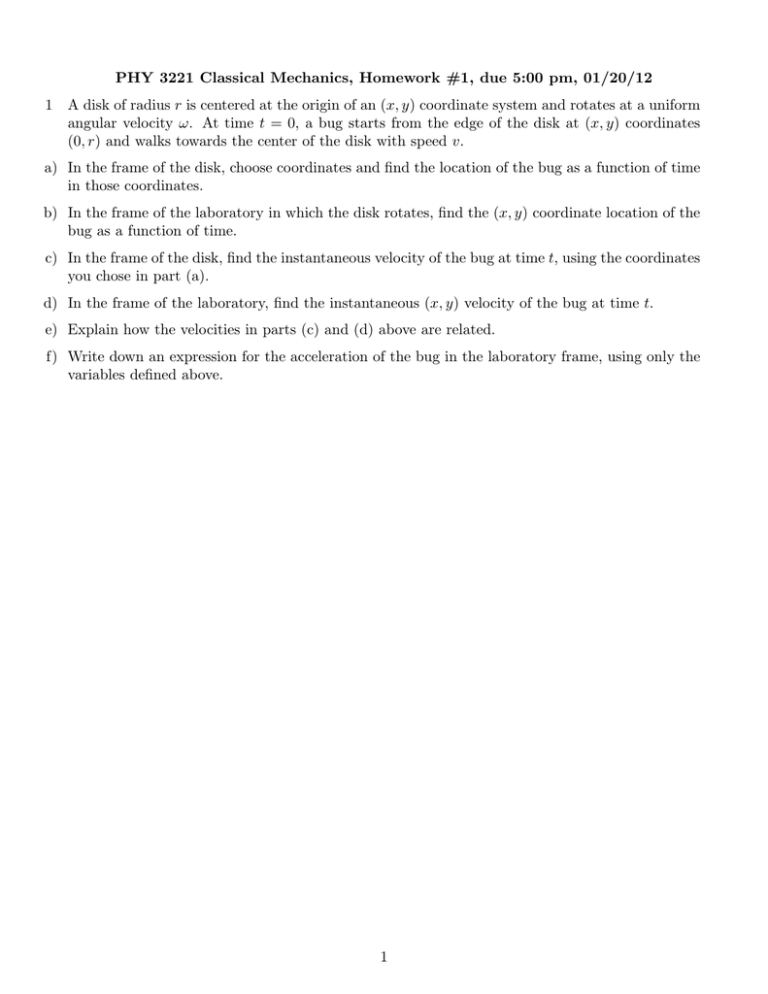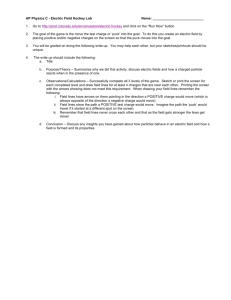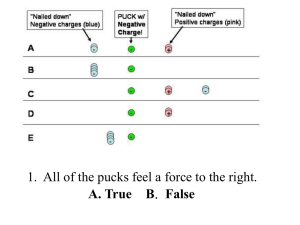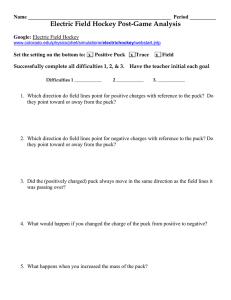PHY 3221 Classical Mechanics, Homework #1, due 5:00 pm, 01/20/12 1 r ω
advertisement

PHY 3221 Classical Mechanics, Homework #1, due 5:00 pm, 01/20/12 1 A disk of radius r is centered at the origin of an (x, y) coordinate system and rotates at a uniform angular velocity ω. At time t = 0, a bug starts from the edge of the disk at (x, y) coordinates (0, r) and walks towards the center of the disk with speed v. a) In the frame of the disk, choose coordinates and find the location of the bug as a function of time in those coordinates. b) In the frame of the laboratory in which the disk rotates, find the (x, y) coordinate location of the bug as a function of time. c) In the frame of the disk, find the instantaneous velocity of the bug at time t, using the coordinates you chose in part (a). d) In the frame of the laboratory, find the instantaneous (x, y) velocity of the bug at time t. e) Explain how the velocities in parts (c) and (d) above are related. f) Write down an expression for the acceleration of the bug in the laboratory frame, using only the variables defined above. 1 2 Consider points P1 and P2 which lie at (x1 , y1 ) and (x2 , y2 ) respectively in the cartesian plane? a) In terms of (x′ , y ′ ) axes rotated by an angle θ with respect to the (x, y) axes, write down the coordinate locations of points P1 and P2 . b) Find the distance between the points P1 and P2 , using the coordinates you have found for them in the (x′ , y ′ ) frame. c) Explain why you would expect your answer in part (b) to be independent of the angle θ? √ d) In each of parts (a) and (b) above, replace y everywhere by ict, where i = −1 and c has the dimensions of speed. Show that the relations between (x′ , t′ ) and (x, t) can be written as real relations using a hyperbolic “angle” given by the relation sinh χ = i sin θ. Hint: first find the corresponding relation for cosh χ. e) In parts (a)–(c), the quantity r2 = x2 + y 2 is invariant under coordinate rotations through any angle θ. Define the corresponding invariant quantity in part (d) as s2 and express it purely in terms of x, c and t. f) Show by explicit calculation that the quantity you have defined in part (e) is invariant for the transformation (using the hyperbolic angle χ) from (x1 , t1 ) to (x′1 , t′1 ). 2 3 Consider cartesian axes (x, y, z) on the surface of the earth, where the z-axis is vertical, and an inclined (x′ , y ′ ) plane, the normal of which makes and angle θ with the vertical z-axis. Let the x′ -axis be horizontal. A frictionless pick is launched up the inclined plane from the (x′ , y ′ ) origin, with a speed v0 at an angle ϕ to the x′ -axis and is captured when it returns to the x′ -axis. a) Find the initial velocity of the pick in the (x′ , y ′ ) frame. b) Find the x′ -velocity of the puck as a function of time. c) Find the y ′ -velocity of the puck as a function of time. d) Find the x′ -position of the puck as a function of time. e) Find the y ′ -position of the puck as a function of time. f) Find the time at which the puck returns to the x′ -axis. g) In some circumstances, the puck will reach its greatest distance from the (x′ , y ′ )-origin before it returns to the x′ -axis. The condition that this occurs is independent of θ. Find the relevant condition on ϕ for this to occur? h) Find the maximum distance the puck goes from the (x′ , y ′ )-origin when the inequality condition you found in part (g) is just satisfied. 3




